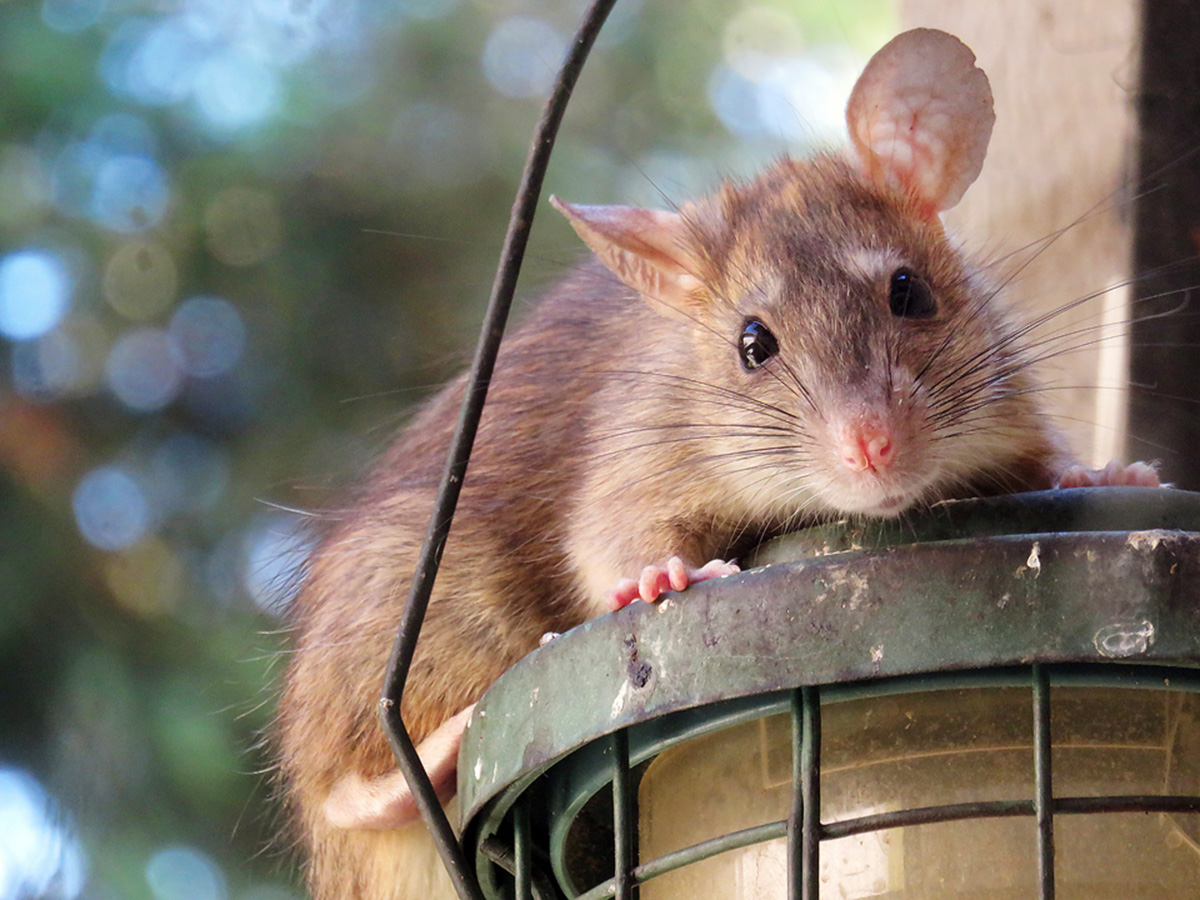
Rats live in cities around the world, often in close proximity to people. You probably don’t want them as your neighbour, but does the city environment increase potential risks to human health?
“Rats can carry a broad array of pathogens, including those that can be transmitted to people,” says Jamie Rothenburger, a veterinary pathologist and PhD student at the University of Guelph’s Ontario Veterinary College.
Rothenburger is taking a detailed look at individual rats and their urban environment with her adviser, Prof. Claire Jardine, Department of Pathobiology. By learning how their environment affects rats and the zoonotic pathogens they carry, she hopes to better understand potential human health risks.
Rothenburger is analyzing more than 45 environmental variables from detailed data gathered by the Vancouver Rat Project, which looks at environmental features that influence rat infestations.
The variables look at land use, including commercial property versus industrial, and green space versus vacant lots. They also include the type of housing such as single-detached, apartment building, grocery store or restaurant, as well as information on how well each building was maintained — were they in good condition, how much garbage was around them, were there commercial bins or commercial recycling bins? The variables also delve into the green space and its maintenance: Was it tidy or was it overgrown with weeds? And they also look at alleyway maintenance: Was the pavement cracked, did people loiter there and were the alleys used by vehicles?
The proportion of infected rats varied between city blocks in Vancouver, and researchers believe that difference had something to do with their environment. Analyzing environmental factors associated with rat infections could explain why distribution varies in the city and identify areas to mitigate rats or reduce disease risk to people, says Rothenburger.
She also added 32 weather variables to the mix, looking at average temperatures, maximum temperatures and total precipitation.
“We know the rats didn’t get sick on the day they were captured, so I’m looking at the average temperatures for periods of time before the rats were caught,” says Rothenburger. “Minimum or maximum temperatures could really impact pathogen survival. These pathogens don’t do well in heat or cold, and temperatures could also affect the rats themselves.”
She adds, “Most studies look at one bacteria in one host, but this doesn’t really represent nature because most animals have multiple infections at one time.”
She’s focusing on four pathogens: Bartonella, a flea-transmitted bacterium frequently found in rats, and specific pathogens discovered in the Vancouver rats: Clostridium difficile, antimicrobial resistant E. coli and methicillin-resistant Staphylococcus aureus (MRSA), deemed a ”super bug” because it’s resistant to some commonly used antibiotics. By examining all four pathogens, she will be able to compare how environmental and weather factors influence them.
“This is one of the first times MRSA was detected in city rats,” says Rothenburger. “But the distribution was patchy and may be related to something in the environment.”
Preliminary analyses show that there are some environmental and weather factors that are associated with infected rats and these vary depending on the pathogen.
“Pathogen ecology, including prevalence, is influenced by a number of factors, including geographic location, habitat, the season and weather,” says Jardine. “Previous work by the Vancouver Rat Project has shown that prevalence of zoonotic pathogens in rats varies markedly over short geographic distances.”
Looking for connections between the city environment and pathogens is key.
Cities around the world are similar in structure and design: they are densely populated with pavement, concrete structures and high-density roads, Rothenburger points out.
“If we uncover an association with pathogens in rats and environmental features in an intercity neighbourhood in Vancouver, it is very likely those similar features exist in cities elsewhere in the world,” she says.